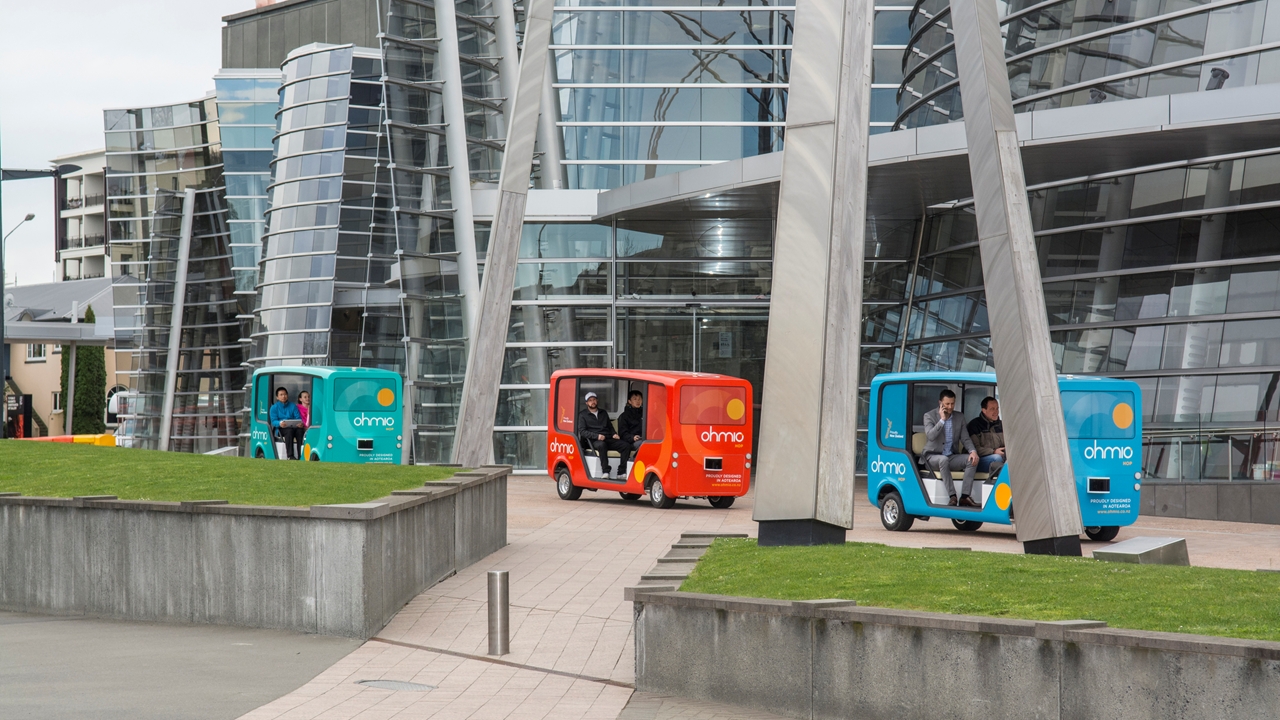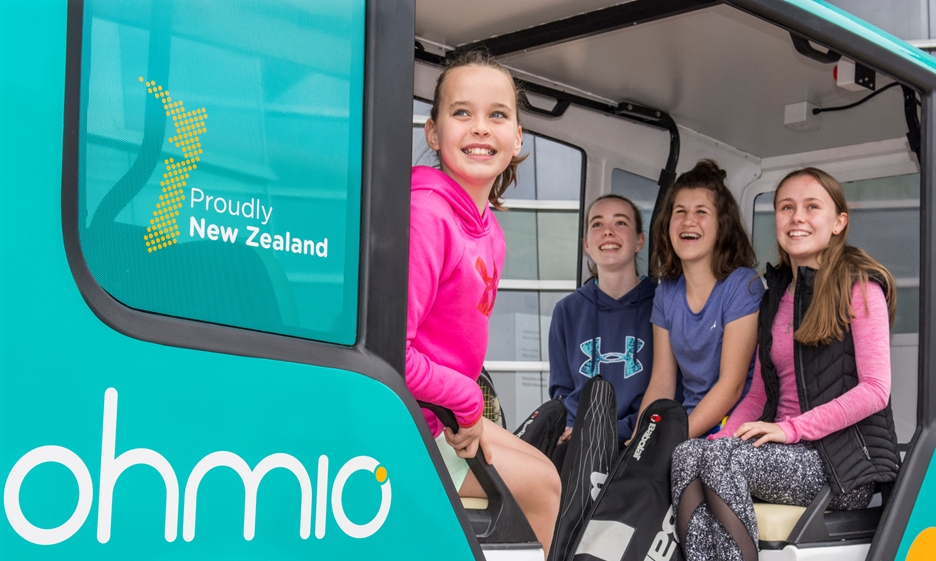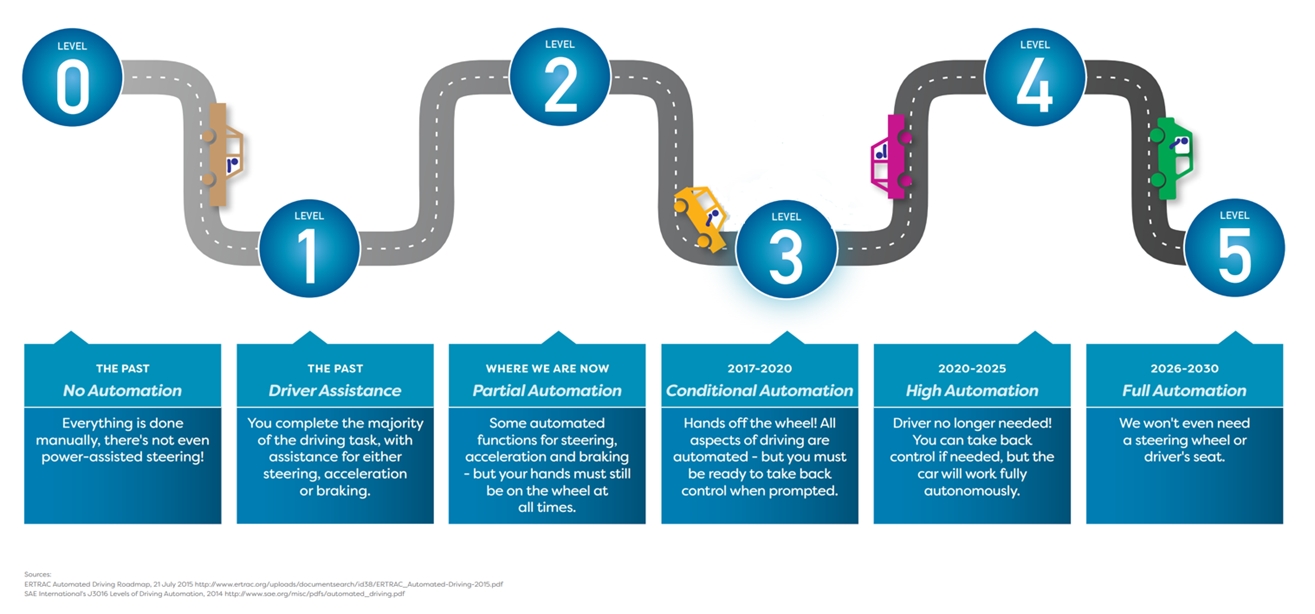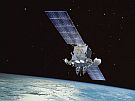What are self-driving vehicles?
Self-driving vehicles are also known as:
- autonomous vehicles
- driverless vehicles
- robotic vehicles
- unmanned ground vehicles
Self-driving vehicles drive themselves. They detect their surroundings and navigate by using technology. They combine sensors and software to control, navigate, and drive the vehicle.
Self-driving vehicles use a variety of techniques to detect their surroundings and control the vehicle, such as:
- radar
- laser light (LiDAR) - uses light to measure distance, avoid obstacles and build a map of the environment
- automatic emergency braking - automatically applies the brakes if it senses a collision is coming
- GPS - gives a precise location of the vehicle
- odometry - motion sensors which monitor distance travelled
- computer vision - cameras to 'see' traffic lights, vehicles and other objects
Self-driving cars can see and understand the world around them, avoiding obstacles to get to where they need to go. There are three things required to turn a regular car into a self-driving car:
- A GPS system - much like the ones found in many vehicles today.
- A system to recognize changing conditions on the roads.
- A way to process and react to this information while driving
How do self-driving cars work?
Inside each self-driving car is a computer. These computers tell the cars how to drive, using maps. These maps are made up of information the computer has been given by people, and new information is added to it while the car is moving!
Self-driving cars use a series of cameras and sensors to gather the information their computers need to make the maps useful. The sensors can tell how far away other cars are, see where the road stops and where lanes are, and how to park.
The cameras look out for traffic lights, road signs and obstacles, including people. The computer combines all this information and adds it to the map. The cars use their maps and computers to make decisions about how to drive safely.
Self-driving cars learn how to drive by practicing
While driving, the self-driving car uses its computer to make decisions. After each decision the computer makes, it is told if it was right or wrong by a set of rules. These rules are based on instructions the computer was given by people – like “drive through green lights” and “always stop for people”.
If the computer makes the right decision, like stopping at a red light, it will add that action to the map. If the computer made the wrong decision, like hitting the garage door when parking, it won’t be added to the map. This way, the car learns not to make mistakes, and how to drive safely.
Self-driving cars are very good at following rules. After a lot of practice and training, the cars can drive themselves. One day you might have a self-driving car too.
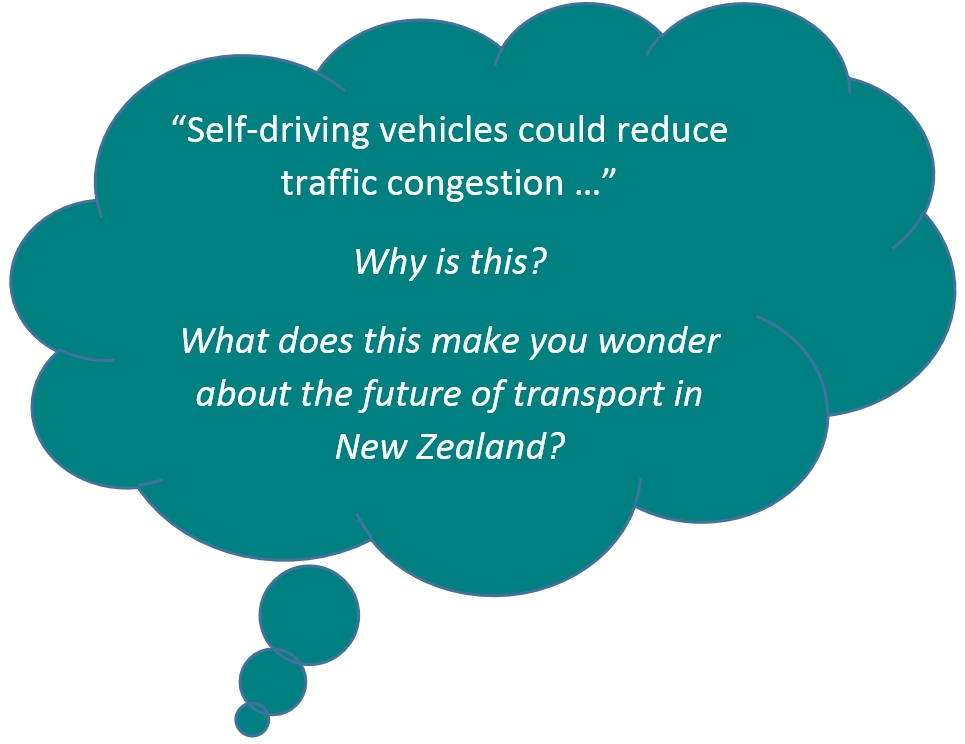 The benefits of self-driving cars
The benefits of self-driving cars
There are many reasons for developing self-driving cars, including:
- reduced travel and road costs
- increased safety
- increased ability to travel
- less road congestion
- reduced fuel use
- less parking spaces needed
- more efficient public transport
Can you think of any other benefits of having self-driving vehicles?
Improving the accuracy of GPS signals will help make self-driving vehicles safer. This could be achieved through SBAS which is currently being trialled in New Zealand and Australia.

